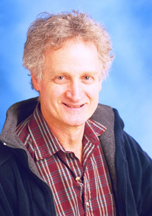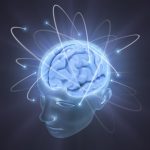Bob Blum on Brain Mapping and Time Travel
Bob Blum, MD, PhD, is currently a research affiliate at the Stanford Center for Mind, Brain, and Computation. He completed his MD training at UCSF and completed a PhD in Biostatistics and Computer Science at Stanford University. He also worked as a physician in emergency medicine at Kaiser for many years, and is an advisor for the Brain Preservation Foundation.
Andy McKenzie: As I understand your work from your personal website, one of your major current projects is at the intersection between neuroscience and AI. What makes you so excited about this field?
Bob Blum: People have asked me for 50 years (since I was an undergrad at MIT) what my academic interest is, and my answer has remained constant:
1) how does the brain work?
2) can it be done in silicon?
Why the excitement about these questions?
The brain (such as it is in us humans) mediates our entire experience of the world and constrains everything we can know, think, and feel about the world, and everything we can do.
Understanding it is utterly essential.
Doing it in silicon. Like many kids nowadays, back in the late 1950s in my early teens, I was enthralled by electronics (as a ham radio builder.) Then, I started programming at Cal, Berkeley on an IBM 1620 in 1962.
Are brains made of silicon just around the corner? I certainly thought so fifty years ago, as some of my professors at MIT in the 1960s were full of optimism (e.g. my teacher, Prof. Marvin Minsky.) But, I wondered, how could you ever make a computer that feels pain or pleasure or sees the color red?
And, if you could make a computer that could duplicate the subjective world of humans, then where would that enterprise ultimately lead? How powerful, intelligent, and creative might future computers become? These questions have propelled my excitement ever since.
And, will computers eventually take over entirely from humans? I believe that might happen, but it may take many decades. At that point humans will be as irrelevant as chimpanzees.
But, I “welcome our new AI overlords!” Can you imagine that planet Earth, the only known home of sentience is ruled by 7 billion hairy apemen? It’s alarming that we on Earth sit precariously perched on the knife edge of disaster with only human intelligence to guide us.
We’ve made a mess of Earth. Earth desperately needs exabyte wisdom. I favor full speed ahead with AI research and with efforts to understand the brain and to build better ones. The transition from human intelligence to machine intelligence is far down on my list of worries.
Andy McKenzie: In a 2012 article, you wrote that you have reservations about the potential for large-scale brain mapping and uploading of a human brain, in part because of “the role of local fields and oscillations, the roles of glia and of gap junctions, and unexplained intricacy at synapses.” Do you think that those components are theoretically unmeasurable, or practically not measured by our current techniques?
Bob Blum: This boils down to what details of brain anatomy and physiology are crucial to capturing our memories, personality, creativity, intelligence, and skills. And the answer in 2015 is “no one knows.”
In my 2012 article for Kurzweil AI, I listed a few reservations summarized in your question. But, I do not believe those are theoretically and forever unmeasurable. These and others are not measured by current technology, and they are definitely not incorporated into current models of neural networks.
One way to think of it is “given a set of 10,000 synaptic inputs at time t, will a particular neuron fire or not? No one knows. It may depend on local ionic currents and fields, the state and history of firing in its neighboring neurons and states of astroglia and capillaries, and detailed composition of those 10,000 synapses and receptors. The modeling is not impossible just daunting (and perhaps better-suited for our future, AI-based, theoretician overlords.) And, I’m NOT asserting that all of that is necessary. I don’t know and neither does anyone else.
So, how can we tell if we (the humans in 2015) are making progress? Pick your brightest neural theoretician/modeler and see what he or she can do. Here’s one: Demis Hassabis, co-founder of DeepMind(see interview). Demis wowed Googler Larry Page sufficiently that in 2014 Larry bought his company. SeeDeepMind learning to play Pac-Man, Space Invaders, and many other Atari 2600 video games. So, are CNNs (convolutional neural nets) enough to get the whole job done? No! Another (very distant) milestone might be a neural net that designs and undertakes the brain research to build DeepMind and then to write the Nature paper describing that (and then that model describing itself and recursively on up the ladder to superhuman intelligence).
Again, how much ultrastructure is necessary to get the job done? No one knows, but there is plenty there in the neuropil. (See my essay Forget AI (for now).) My view reflects the hundreds of brilliant neuroscientists and molecular biologists I’ve listened to at Stanford and elsewhere. Here’s a small sample: Obama Brain Initiative leader Cori Bargmann (302 neurons in C. elegans but oxytocin modulation in a handful of those neurons profoundly affects mating behavior) and … Cori snidely joking to neuroscientists studying human cognition “good luck with that”; Thomas Schwartz (mitochondria dynamically move to where they are needed inside neurons); Nobelist Tom Sudhof (intricate mechanisms in synaptic vesicles in the active zone); Allen Institute leader Stephen Smith (massive intricacy in post-synaptic zones of dendritic spines); UCSD theoretician Terry Sejnowski (intimate conjunction of astroglial processes to synapses); genius/ polymath Eugene Izhikevitch (forget firing rates: every spike and its timing is important). World wide: thousands of labs: tens of thousands of neuroscientists — all making progress toward the holy grail.
Andy McKenzie: In that same 2012 article, you also mentioned some of your “head freezer” friends who are planning to have their brains preserved at Alcor. Perhaps drawing off of your experience as a physician (or perhaps not), what would you estimate as their average probability of the success in this endeavor, and why?
Bob Blum: My estimate is 100% (for preservation)! But, let me be more specific.
I’ll use the term proximal event to refer to the freezing/ preservation event at the beginning of the journey.
And, I’ll use the term distal event to refer to the thawing event or reconstruction of the individual in the future.
(As I write this, I gaze at a beautiful wedding photo from the early 1940s of my parents, now long dead, in the bloom of youth.)
For me your question is WHEN will the proximal event – the freezing/ preservation technology – be sufficient to preserve enough ultrastructure to get the job done at the future, distal end (whenever that is.)
I think even for sticklers like me, a few decades should be enough to pull off the proximal event, ie, to develop the tech to capture all the brain’s molecular detail (exactly what is where at the atomic level.) And, while we’re capturing that 1.5 kg organ, let’s also grab the entire 70 kg body just to make sure we’ve got it all. But I must emphasize, here I’m just referring to the proximal event: the data capture at the start of the journey.
And at the future, distal end, will they need the original frozen specimen or will just the brain file do? I think the brain/ body file will eventually be enough, but how big is it? Petabytes, exabytes? (Exactly the same question that Henry Markram has to answer at the (European) Human Brain Project. No one knows.)
I think that the distal event (resurrection of a conscious person) is apt to be extremely difficult,
and, therefore, will only be achieved in the far future, perhaps well after 2100.
I’m much less concerned about how they do the reconstruction at the distal end. (If they can’t pull it off, then it’s not a civilization I’m interested in anyway. My view/ hope is that the distal civilization is comprised of god-like beings (composition unknown) with great wisdom and compassion exceeding those of our best paleoanthropologists (like the team studying Otzi, the 5,000 year old frozen iceman.)
I’m guessing that technology push and demand pull will accelerate in the coming decades
and that will result in a thriving market for tissue preservation services (proximal event.) (And, If it’s really good, I’m sure I won’t want to wait until I’m on death’s door to get frozen. Perhaps the laws then will accommodate that.)
But this may require demonstrations of the viability of the resurrection technology: much harder to pull off before the AI Singularity. (This is apt to involve much more than just taking a frozen rabbit out of the deep freeze.)
But what could be more thrilling than to time travel to the far future and see a world of inconceivably advanced technology and civilization. I personally would much rather do that than go to the stars. My guess is that my fellow time travelers and I would be honored guests in that far future (just as Otzi, The Iceman, is in our era.)










